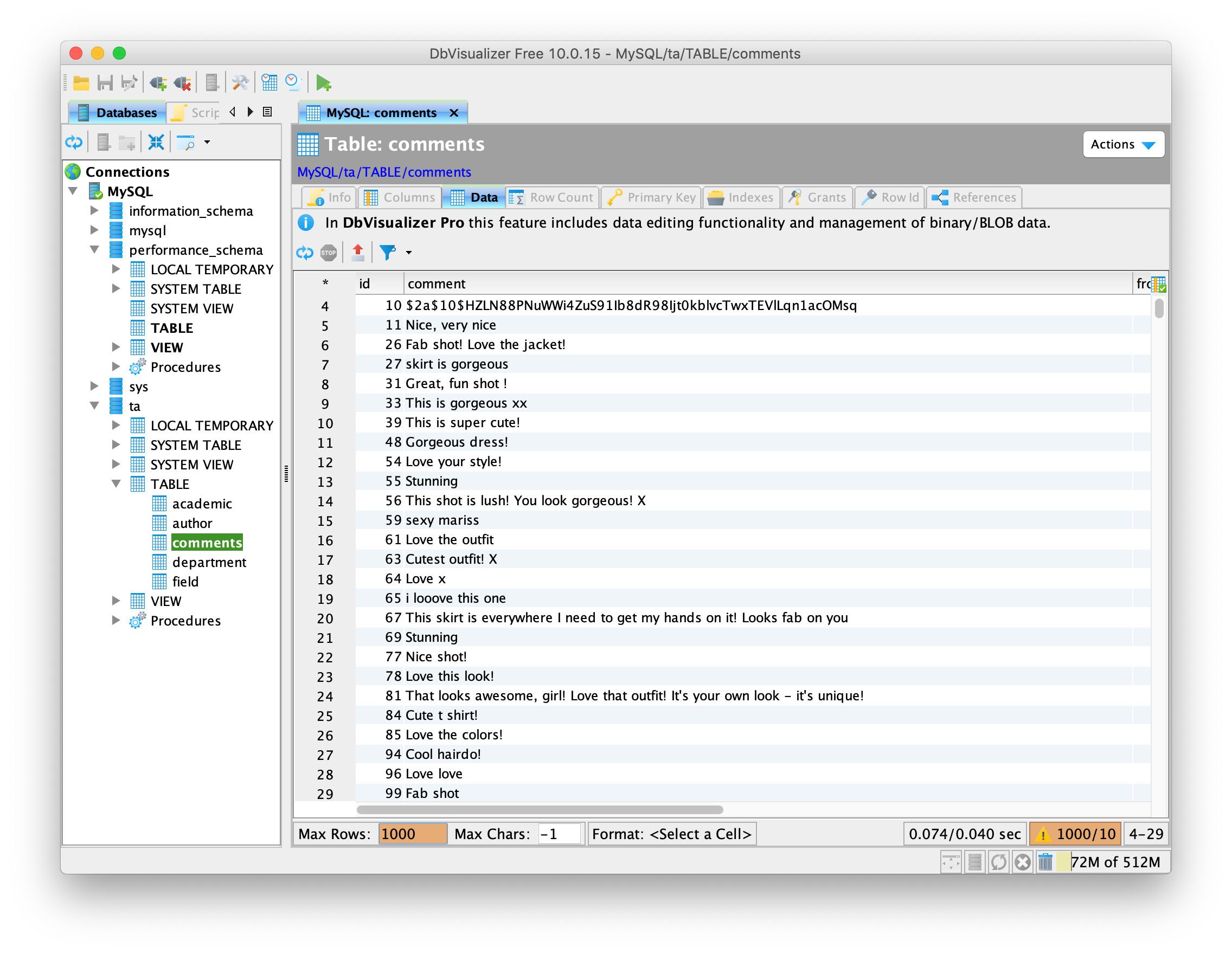DbVisualizer vs DBeaver vs TablePlus - A quick review
In this post, we are going to have a quick review of DbVisualizer, DBeaver, TablePlus; and compare the pros and cons to see which is the best GUI client for your database management tasks.
1. DbVisualizer
It is a universal solution for both the development and maintenance of your databases.
-
Supported platforms: DbVisualizer runs on all the major platforms, Windows, macOS, and Linux.
-
Supported Drivers: DbVisualizer supports a lot of widely used databases: Amazon Redshift, DB2 LUW, Exasol, H2, Informix, JavaDB/Derby, Microsoft SQL Server, Mimer SQL, MySQL, Netezza, NuoDB, Oracle, PostgreSQL, SQLite, Sybase ASE, and Vertica.
-
Pricing: DbVisualizer has a free version with limited feature support. The paid version costs $197 per user and comes with one-year updates and 60-day email support, and extends the free edition with a collection of features such as:
- Edit Table Data
- Auto Completion support in the SQL editor
- Visual Create/Alter Table support
- Charting of data
- Import/Export
- Query Builder

Pros:
- Comprehensive database & OS support
- Full featured table data and database object management
- Export database objects and table data
- Dynamic JDBC driver management (no CLASSPATH editing)
- SSH support with known_hosts and private key support
Cons:
- The interface doesn’t feel native and friendly. Sometimes users have to struggle to get to the correct place.
- The license pricing is costly.
2. DBeaver
DBeaver provides a powerful database client, but it’s a little bit overwhelming.
-
Supported platforms: DBeaver works on all platforms supported by Eclipse framework, previously Windows, Linux, MacOS, Solaris, AIX, HP-UX. Starting from version 4.2, it limited its support to Windows, MacOS, and Linux only.
-
Supported Drivers: DBeaver community version can work with any database server which has JDBC driver (which means a lot of databases): MySQL, PostgreSQL, MariaDB, SQLite, Oracle, to DB2, SQL Server, Sybase, MS Access, Teradata, Firebird, Derby, etc. The enterprise adds support for non-JDBC data sources (WMI, MongoDB, Cassandra, Redis).
-
Pricing: DBeaver has a community version (DBeaver CE) which is free and open source. There’s also an enterprise edition (DBeaver EE) with more driver support, more advanced features and dedicated customer support for enterprises.

Pros:
- Cross-platform
- Multiple drivers support
- Assigning connection color
- Entity-relationship diagrams are available
- Built-in reformat SQL
Cons:
- It runs on a Java virtual machine, eats up a lot of RAM while running.
- Confusing icon design and somewhat unintuitive. Sometimes you don’t know where to look for what you need.
- Autocomplete is slow, and not so smart.
3. TablePlus
With a native build and a lightweight size, TablePlus is a very handy tool for managing multiple databases.
-
Supported platforms: TablePlus is built native for each platform. It started out with a native version for Mac, then another version for Windows, and a version for Linux was introduced recently as an alpha release. It also has an iOS version.
-
Supported Drivers: TablePlus supports a handful of relational databases: MySQL, PostgreSQL, SQLite, Microsoft SQL Server, Amazon Redshift, MariaDB, CockroachDB, Vertica, Oracle; and two popular NoSQL databases: Cassandra and Redis.
-
Pricing: TablePlus has a free version with full set of features which you can download and use forever, but there are some usage limitations. If you use it heavily, the license costs $59 to remove all those limitations.

Pros:
- Native build for each platform so it’s fast, lightweight, and stable.
- Clean and simple interface.
- Multiple drivers support
- Multiple conditions data filter
- Queries history and keyword binding favorite.
- Streaming results and async loading to show queries results faster and doesn’t block the UI.
- Very quick inline editing for table data and structure, you also can edit query results directly.
- Smart query editor with highlight syntax, instant autocomplete, SQL reformat.
- Multiple carets
- A plugin system to extend the app.
- Quick support. TablePlus releases new updates regularly and responds to users’ requests almost immediately.
Cons:
It currently lacks of some advanced features such as ER Diagram, database compare tool to Diff and Sync, etc.
4. Conclusion
Go with DbVisualizer if you:
- Work with multiple databases
- Focus more on database designing tasks with visulization.
- Are comfortable with the cost
Go with DBeaver if you:
- Work with all kinds of databases
- Prefer a an old-fashioned design with all function buttons on the UI.
Go with TablePlus if you:
- Are a fan of native experience
- Work with multiple databases
- Want a modern design with better usability
- Want quick support & development cycle.